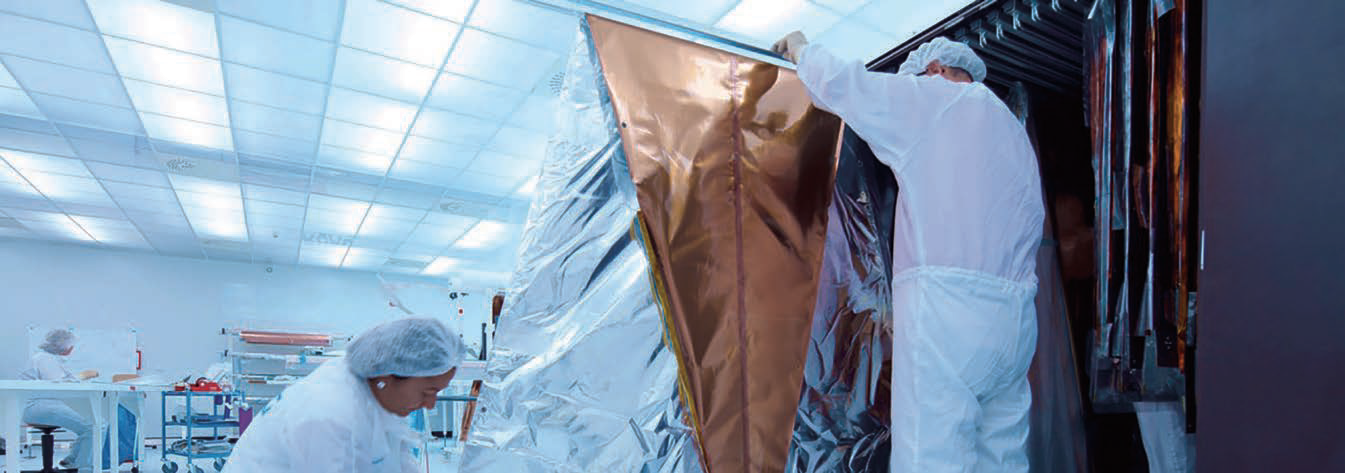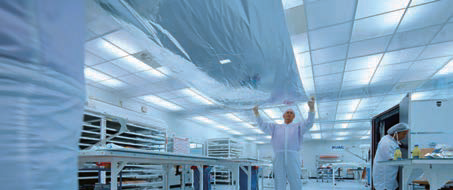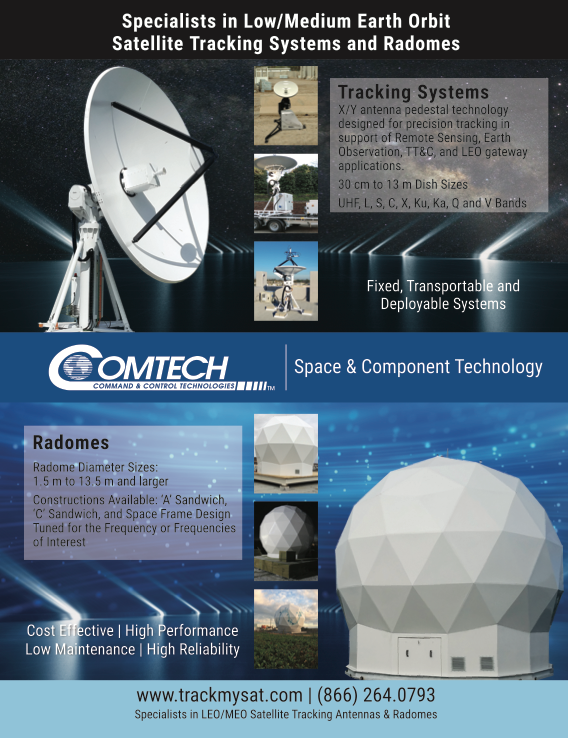Niklas Boman is currently positioned in RUAG Space’s U.S. office in San Francisco, California. He owns a Master of Science in Engineering degree and possesses more than 20 years of global professional experience, of which more than years found him gaining management experience in the aerospace industry. Those positions included sales and marketing, production as well as R&D activities. During the last few years, Mr. Boman held several senior positions in the space, aviation and military (development and production) environments. He also has several years of PnL success.
In the U.S. RUAG Space is mostly known for its payload fairings. However, for OneWeb the company delivered a wide range of products for that firm.

Niklas Boman (NB)
Indeed. For the OneWeb constellation program, RUAG Space is a key partner. The company delivered a superlight satellite dispenser, which is able to deploy 32 satellites safely into space.
Our multi-layer thermal insulation protects OneWeb satellites from cold and heat in space. The OneWeb satellite panels are manufactured by us as well as high-tech containers and ground support equipment that OneWeb uses to transport the assembled satellites to the worldwide rocket launch centers.
RUAG space also provides launch support at the launch base to integrate the satellites onto the dispenser.
Mr. Boman, you mentioned Titusville. Why did you build up a new factory in the U.S. for OneWeb?
NB
For OneWeb, we have set-up a brand-new facility in Titusville, Florida, because we want to be very close to our customer OneWeb. To have a facility close to the customer enables us to deliver on-time and to deliver high quantities of product. Over the years, RUAG Space has invested a significant amount of money in both processes and infrastructure.
The satellite constellation will consist of hundreds of small satellites. How did you achieve such a large-scale production?
NB
We have a highly automated production using efficient processes. The OneWeb satellite panels, for example, are manufactured using the Automated Potting Process (APM). This potting machine is putting hundreds of inserts into a panel with a robot and is totally automatic. In the past this was done manually.
APM is a key technology for the OneWeb project. Using our APM technology, we can dramatically reduce the production time from 30 minutes per insert to a quick 90 seconds — or even lower.
The APM process, which was developed by RUAG Space, is a revolutionary production method patented by the company that uses a computer numerical control (CNC) machine to rapidly position special inserts filled with adhesive into the satellite structure’s sandwich panels.

How did the company produce the thermal insulation for so many satellites?
NB
We have more than 25 years of experience in producing high-quality thermal insulation for satellites. We delivered more than 50 thermal insulation systems for space projects.
However, to produce multilayer insulation for 900 satellites, well, that is clearly a big amount for the space industry. To rapidly produce such high volumes, we used state-of-the-art laser technology. We also used our experience in serial production for terrestrial thermal insulation, such as high temperature insulation for MRI scanners.
www.ruag.com/en/products-services/space/spacecraft/multi-layer-insulation



